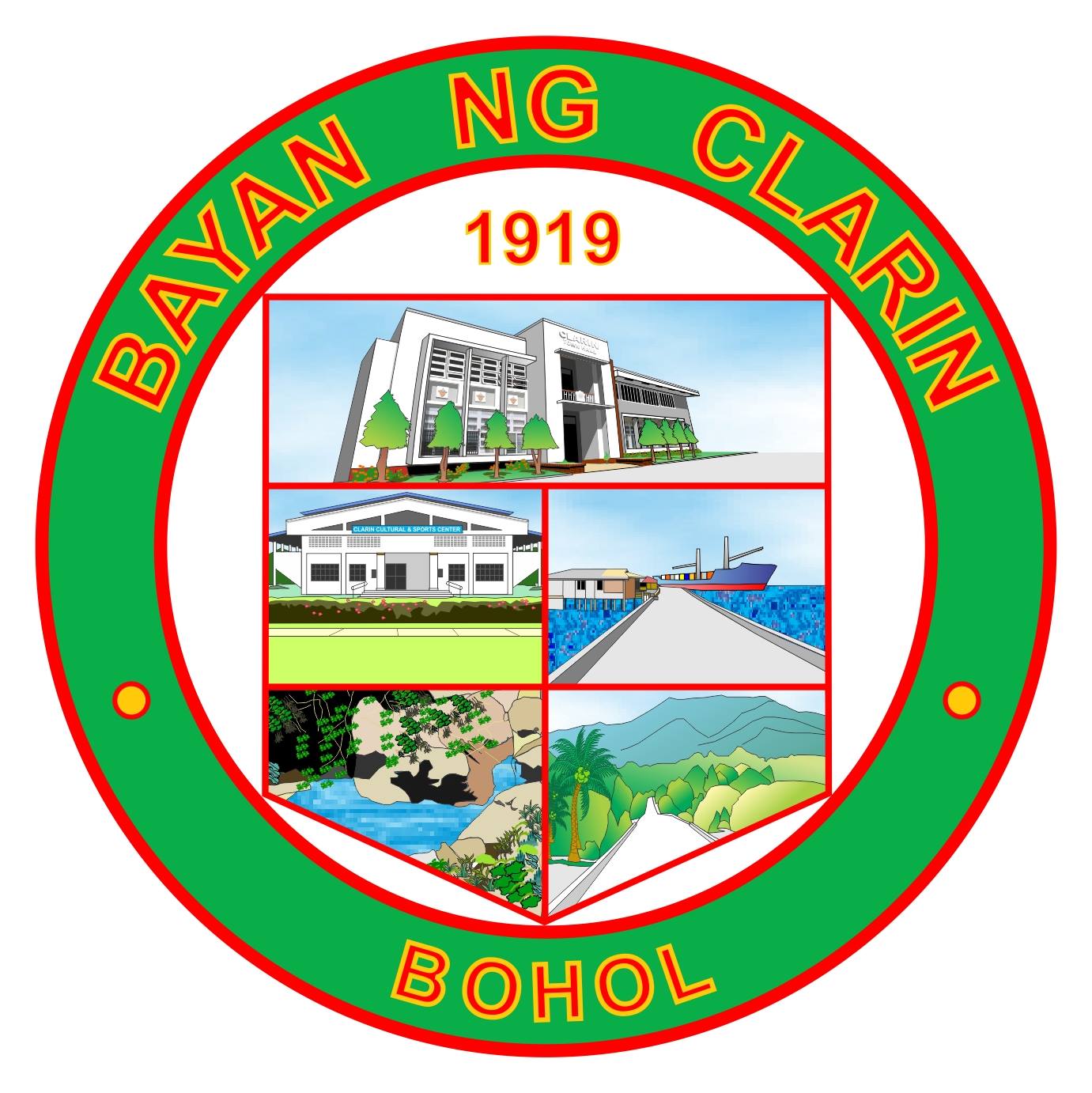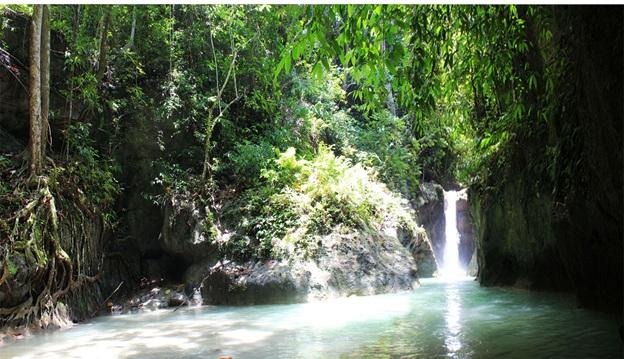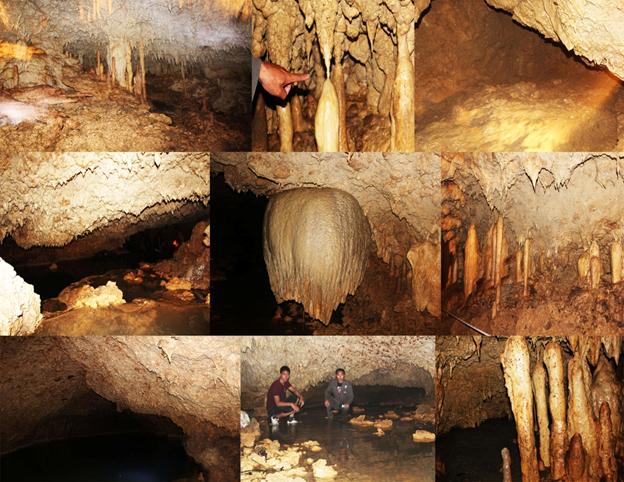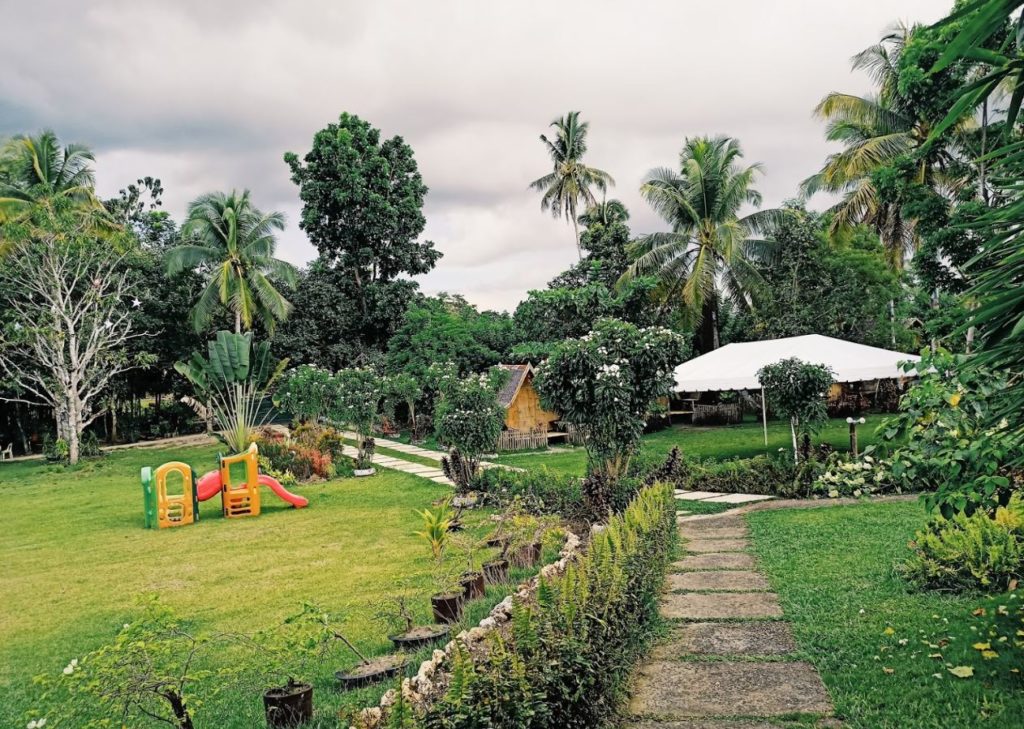

Clarin is a 5th class municipality in the 2nd district of the province of Bohol, Philippines. According to the 2007 census, it has a population of 18,871 people with a density of 652.3/km2. As seen in the map above, Clarin is in the northwestern part of Bohol and is 61 kilometers from Tagbilaran City. It was organized on January 31, 1919 out of the territories taken from Tubigon, Inabanga and Carmen. It was originally called “Can-ogong” after one of the early settlers named Ogong who had a habit of hanging a bamboo tube for salted fish. Since he was a popular man in the community the place was called after him, Can-ogong, meaning “Ogong’s place.” Can-ogong was then changed to Clarin when it was organized as a municipality in honor of the first Civil Governor of Bohol, Hon. Anecito Clarin. During World War II, its central school was used by the Japanese as a concentration camp for suspected persons.
Clarin is 1 hr. & 20 mins away from Tagbilaran City. You can go there by Bus or by V-Hire. We are looking forward on your upcoming visit!
This location is situated on the northwestern coast of the Bohol mainland and falls under the 2nd Congressional District. The total number of Barangays in this area is 24, and it is classified as a 5th income classification (as per D.O. 32-01). The average LGU annual income is P37,359,576.00, and the total municipal land area is 62.79 sq. kms. The timberland area of this region is 779 hectares (with the mangrove area covering 182 hectares), and there is no alienable and disposable (A & D) land. The soil cover consists of Annam, Bantog, Bolinao, Inabanga, and Faraon Clay. The river basins (watershed areas) in this region are Tubigon RB and Abatan RB. The population of this area was 18,040 in the 2000 NSO Census, 18,871 in 2007, and 19,616 in 2012 (projected). The average population growth rate from 2000 to 2007 was 0.62%. The total number of households in 2007 was 4,004. The major industries in this region are farming and fishing, and the literacy rate is 89.77%. There is one higher education institution (BISU), two secondary schools, eight primary schools, and nine elementary schools. The language/dialect spoken here is Bisaya/Cebuano, and the religious affiliation (1990) is Roman Catholic. The main source of potable water is groundwater and surface water, and the water supply is Level I, II, and III. The potable water demand is 1,809 cubic meters per day (cum/d) as per CY 1998 and 9,418 cu.m./d as per CY 2030. The estimated groundwater recharge is 33,627 cu.m./day (average), and the water demand for irrigation is 9,418 cum/d. As of CY 1999, all barangays were energized, and 4,857 or 113% households were connected, with 4,300 potential house connections. The number of households with access to sanitary toilets was 3,585 (93.58% 2010), and there is no drainage and sewerage system. This region has five barangay health stations (20%), one Medicare Community Hospital, one municipal health center, and 24 day care centers (100%). There are no carpable areas, and the total road length is 85.95 kilometers, with nine bridges. The communication system in this area includes telephone (PLDT-PCO, GLOBE), and radio.
You can visit the official webpage of Bayan ng Clarin for more information
Municipality of Clarin official website Municipality Clarin official facebook page Province of Bohol | Clarin official webpageUnknown to many Filipinos, Bohol is dotted with various spectacular towns that showcase the province's rich and well-preserved history and culture. Clarin is one of its most beautiful towns, attracting visitors due to its many amazing natural wonders that are not found anywhere else.
Clarin, an emerging tourist destination in Northeastern Bohol, is abundantly blessed with natural beauty and beautiful people. It is a thriving coastal town where fishing is one of the main sources of income. The "Takla," a type of crayfish, is abundant along its coast.
The Bogtongbod Caves are not far from the falls. These majestic natural rock formations will awe visitors with their beautiful crystalline stalactites and stalagmites and would be a great haven for spelunkers and adventurers alike.

BINALIW FALLS

BOGTONGOD CAVE
Tangub Spring, a natural fountain with cool, clean water and surrounding lush flora that refreshes guests' bodies and minds, is just a few meters away.
On the way back from the caves to Clarin, a stop at the Tontonan Heights of the town of Clarin below provided an arresting view of the island of Cebu across the sea and several islands in between.
The Clarin Boardwalk is the closest to the town center. Here, visitors can observe several bird species, go fishing, or board a banca to snorkel at nearby Majigpit Island, a fish sanctuary.
The flight from Manila to Tagbilaran takes about an hour. It takes about a day to travel by sea.
The interior route to and from Tagbilaran City is served by buses, jeepneys, and multicabs. Outside of Tagbilaran City, vans and taxis are also available. You can take public transportation from the city to the town of Loay.

BUNG-AW ECO-FARM
Bung-aw ecofarm is a place in Clarin where you can stay and visit. It has many amenities such as a pool, cottages, and a view of Clarin. The farm has large grounds with plenty of room to move and walk around. Its openness, combined with the surrounding plant life, creates a sense of freedom while remaining protected in the outdoors. You'll be treated to a breathtaking view of the mountain ridge with endless greenery all around the premises. Although the views will keep you entertained for hours, Bung-aw Eco Farm has a few facilities to keep you entertained on the premises. The pool is the most visible of the amenities. It's a refreshing infinity pool surrounded by various plant growth, conveniently located next to their dining area and viewing deck. Nothing beats a refreshing dip while sipping refreshments and admiring a breathtaking view.
Let us know your concerns